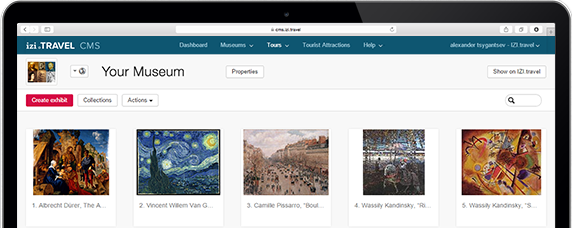Audio tour Saint Jean du Gard
2 sights
- Sommario Auditour
-
Sommario Auditour
Update Required To play the media you will need to either update your browser to a recent version or update your Flash plugin.St Jean du Gard is a village with a strong Cévenol character, stretching along the Gardon river.
The town of Saint-Jean-du-Gard was established at the confluence of two valleys (the Borgne valley and the French valley), on the route of the ancient Gabales road linking Nîmes to Mende.
Situated at the bottom of the valley and set in its hilly surroundings like a pearl in its jewel case, the village is dominated by the Pic d'Arbousse, the heights of Sueilhes and Montezorgues, the Col Saint Pierre and Mont Brion (815m). Traces of Neolithic settlement (menhirs, dolmens and coffin tombs) have been found in the hills to the north and north-east of the town.
However, the origin of the town can be traced back to the 12th century, as part of the expansionist dynamic of the monasteries on the plain.
Small hermitages were established on the hillsides. A small population began clearing land around Notre Dame de Montezorgues, Notre Dame de la Madeleine in Astreau and Saint Pierre du Pas de Dieu, on the Corniche.
The Pont Vieux, built in 1733 to replace a ford and also a victim of the whims of the water - the Gardon - was rebuilt identically after the flood of 1958. It is featured on the town's coat of arms and carries a strong emotional connotation.
The Maison Rouge spinning mill, built in 1838, is representative of the workshops where silk was spun. Its architecture and décor are symbolic of silk-making in the Cévennes. Renovated, it now houses the Musée des Vallées Cévenoles (Cévennes Valleys Museum), which tells the story of life in the Cévennes in the past.
The town is the starting point for over 150 km of footpaths. Every year on Ascension Day and All Saints' Day, a festival attracts lovers of all kinds of non-motorised hikes, following in the footsteps of their glorious elder, Robert Louis Stevenson, who in 1878 completed the 220 kilometres of his famous "Voyage en Cévennes avec un âne" ("Journey to the Cévennes with a donkey") here. - 1 The Grand Rue
- 2 The birthplace of the Maréchal de Thoiras
- 3 Town wall - Rue des Paillons
- 4 Maison Rouge
- 5 The vicar's house
- 6 The clock tower
- 7 The Porte de l'Esplanade
- 8 Saint Jean Baptiste Church
- 9 The Hotel de Ville
- 10 The house of the Chevalier d'Algues
- 11 Square Augustine Soubeiran
- 12 The Temple
-
Sommario Auditour
Update Required To play the media you will need to either update your browser to a recent version or update your Flash plugin.St Jean du Gard is a village with a strong Cévenol character, stretching along the Gardon river.
The town of Saint-Jean-du-Gard was established at the confluence of two valleys (the Borgne valley and the French valley), on the route of the ancient Gabales road linking Nîmes to Mende.
Situated at the bottom of the valley and set in its hilly surroundings like a pearl in its jewel case, the village is dominated by the Pic d'Arbousse, the heights of Sueilhes and Montezorgues, the Col Saint Pierre and Mont Brion (815m). Traces of Neolithic settlement (menhirs, dolmens and coffin tombs) have been found in the hills to the north and north-east of the town.
However, the origin of the town can be traced back to the 12th century, as part of the expansionist dynamic of the monasteries on the plain.
Small hermitages were established on the hillsides. A small population began clearing land around Notre Dame de Montezorgues, Notre Dame de la Madeleine in Astreau and Saint Pierre du Pas de Dieu, on the Corniche.
The Pont Vieux, built in 1733 to replace a ford and also a victim of the whims of the water - the Gardon - was rebuilt identically after the flood of 1958. It is featured on the town's coat of arms and carries a strong emotional connotation.
The Maison Rouge spinning mill, built in 1838, is representative of the workshops where silk was spun. Its architecture and décor are symbolic of silk-making in the Cévennes. Renovated, it now houses the Musée des Vallées Cévenoles (Cévennes Valleys Museum), which tells the story of life in the Cévennes in the past.
The town is the starting point for over 150 km of footpaths. Every year on Ascension Day and All Saints' Day, a festival attracts lovers of all kinds of non-motorised hikes, following in the footsteps of their glorious elder, Robert Louis Stevenson, who in 1878 completed the 220 kilometres of his famous "Voyage en Cévennes avec un âne" ("Journey to the Cévennes with a donkey") here.
Recensioni
Scarica l'app gratuita izi.TRAVEL
Crea i tuoi audio tour!
L'uso del sistema e l'app di guida per dispositivi mobili sono gratuiti


